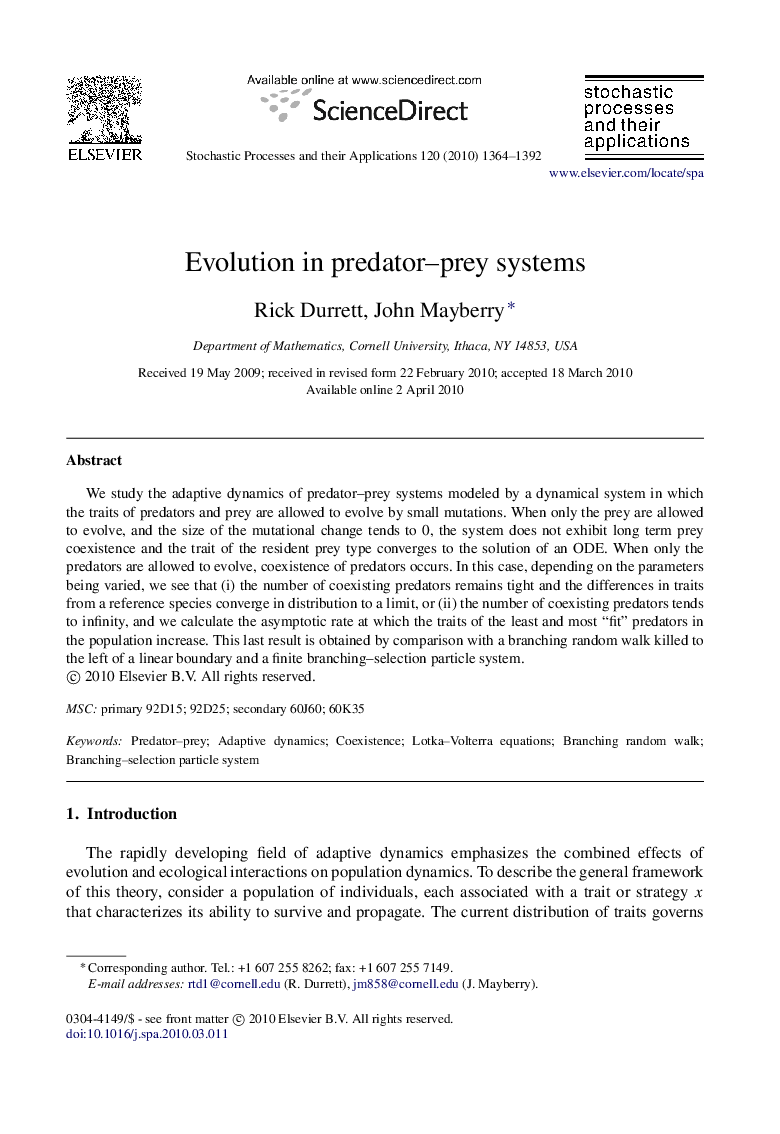| Article ID | Journal | Published Year | Pages | File Type |
|---|---|---|---|---|
| 1156075 | Stochastic Processes and their Applications | 2010 | 29 Pages |
We study the adaptive dynamics of predator–prey systems modeled by a dynamical system in which the traits of predators and prey are allowed to evolve by small mutations. When only the prey are allowed to evolve, and the size of the mutational change tends to 0, the system does not exhibit long term prey coexistence and the trait of the resident prey type converges to the solution of an ODE. When only the predators are allowed to evolve, coexistence of predators occurs. In this case, depending on the parameters being varied, we see that (i) the number of coexisting predators remains tight and the differences in traits from a reference species converge in distribution to a limit, or (ii) the number of coexisting predators tends to infinity, and we calculate the asymptotic rate at which the traits of the least and most “fit” predators in the population increase. This last result is obtained by comparison with a branching random walk killed to the left of a linear boundary and a finite branching–selection particle system.
